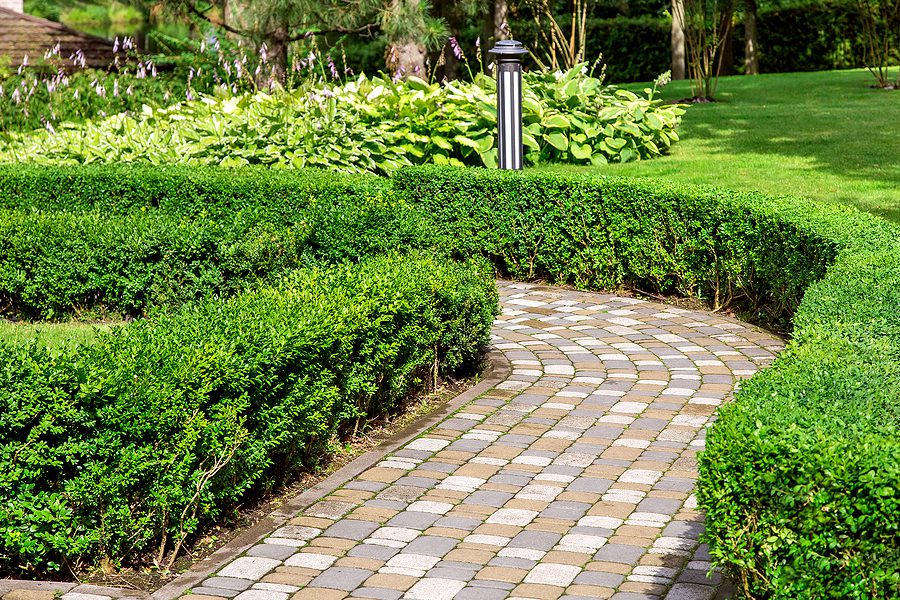How Do I Protect My Shrubs from Winter Damage?

Learning how to protect plants, like your home’s shrubs, this winter so they flourish come spring is a task every gardener, or homeowner, should sign up for.
Landscaping with lots of plants is expensive and it is therefore sound economic practice to take action and protect all your plants, especially your shrubs from winter damage.
Although many trees, shrubs and perennials enter dormancy for the winter, temperature swings, hot sun, low soil moisture and dry, windy conditions can still be damaging. Evergreens, like shrubs, struggle, as they stay active throughout the season, often with cold damage.
Learn what you can do to help your shrubs through extreme cold, both in advance and when it occurs.
The Preparation You Need
Protect Winter Shrubs
In terms of protecting plants from winter damage, the most important first step is to irrigate thoroughly prior to the first hard freeze.
It’s wise to scale back on water in the fall to allow plants to harden off for winter, but shrubs need to go into winter with proper soil moisture. After a couple of light frosts hit, water shrubs deeply and top with a layer of mulch to help keep soil moisture and temperature balanced.
Irrigate – even in cold weather.
While it may look dormant, much of the landscape is still actively using water. Keep an eye on the weather and be mindful of accumulated precipitation each month.
Broadleaf and needled evergreen shrubs need periodic watering throughout the winter, because they keep losing moisture by transpiration, especially during dry, windy stretches when the sun is bright.
Plants get desiccated when they lose water more rapidly than the roots can supply it. Whole branches, in severe cases, can desiccate and die. Regular irrigation provides moisture in times of need, particularly during soil cold and when water availability is low.
Check your plants for signs of drying out during the season. Broadleaf evergreens like camellia and rhododendron will have yellow or orange discoloration of foliage, while needled evergreens will be rust-hued or brown.
Protect Against Freezing Temperatures
Even with the best intention to plant climate-friendly plant material into our gardens we are bound to experience unusual weather patterns.
When the weatherman warns of unseasonably chilly temperatures, make time to guard the shrubbery in your landscape with the same due diligence as you would the rest of your house. Feel you were wronged, and you can be tempted to cut corners, but they are an investment – and they add to the overall value and beauty of your home, too.
Watering the plants several hours before a freeze is the first line of defense against damage (as noted above). In a short, temporary cold snap, cover entire shrubs with burlap, sheets or blankets to insulate them.
To provide more protection, use a frame to keep the covering from touching the plants. Fold the cover right to the soil line in order to hold onto heat that will emanate from the ground.
You can also put a light bulb beneath the cover that would give off some heat, but make sure that it doesn’t touch the cover or foliage.
Final Thoughts
Damage is usually worst on the side of the plant that’s facing the wind or sun; bright winter sun can scorch the south- and west-facing sides of the shrub.
If you’re planting new shrubs, place sensitive species in spots protected from winter winds and direct sunlight. This includes the north, northeast and east sides of buildings, structures, or windbreaks.
For established shrubs in exposed sites, build a simple windbreak to shield plants through the worst of it. First, stretch canvas or burlap between posts along the south and west sides of the shrub. Then fasten held securely from the ground up to the height of the shrub.
A good offense is the best winter defense. Though we are unable to prevent cold damage, gardeners can indeed take measures to mitigate and even eliminate problems in the landscape setting up a beautiful spring awakening.
Want more? Check out more ideas and expert care tips for your landscaping here from R & S Landscaping.
